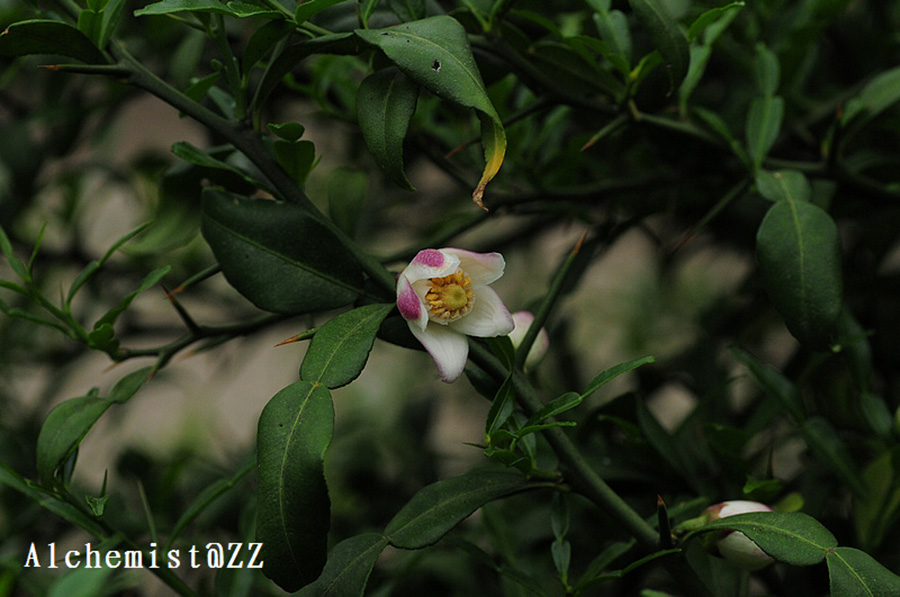宜昌橙 Citrus cavaleriei
- Scientific Name: Citrus cavaleriei H.Lév. ex Cavalerie
- Ref: Bull. Géogr. Bot. 21:211. 1911
- Synonym: Citrus ichangensis Swingle
- English Common Name: Ichang Papeda
- Chinese Common Name: 宜昌橙 Yíchāng chéng, 野柑子 yě∙gānzi, 酸柑子 suān∙gānzi
- Family: Rutaceae
- Genus: Citrus
- Distribution: Mountains, hills, valleys; below 2500 m. S Gansu, N Guangxi, Guizhou, W Hubei, NW and W Hunan, S Shaanxi, Sichuan, Yunnan.
- Photo: 04/19/2013, Chenshan Botanical Garden, Shanghai
Trees or shrubs, 2-10 m tall. Branchlets subglabrous; spines straight, stout, smaller on flowering branches. Leafy petiole 1-3 × as long as blade, narrowly elliptic, 6-16 × 2.5-4 cm, base cuneate, margin finely crenulate, apex rounded; leaf blades ovate-lanceolate, ca. 2(-8) × 0.7-1.5(-4.5) cm, margin entire to finely crenate, apex acuminate. Flowers solitary or to 9 in fascicles, 3-3.5 cm in diam.; buds pale purplish red, broadly ellipsoid. Calyx lobes 5. Petals 4 or 5, white or pink, 1-1.8 × 0.5-0.8 cm. Stamens 16-30; filaments distinct or cohering in bundles, ciliate. Ovary pale green, subellipsoid; style ca. 6.5 mm; stigma pale yellow, with fine shallow grooves. Fruit pale yellow, oblate, globose, or pyriform, usually 3-5 × 4-6 cm but when pyriform to 9-10 × 7-8(-12) cm, with narrow longitudinal grooves, oil dots large and conspicuously prominent, base rounded, apex rounded, dimpled, and with or without a papilla; pericarp to 2 cm thick but usually much less; sarcocarp in 7-13 segments, yellowish white, very sour. Seeds 30 or more, subglobose to irregularly pyramidal, ca. 1.5 × 1.5 × 1.2 cm; seed coat yellowish white, chalaza dark brown, large, and covering almost half of coat; embryo(s) solitary to numerous; cotyledons milky white. Fl. Mar-Jun, fr. Oct-Dec. (Flora of China)
